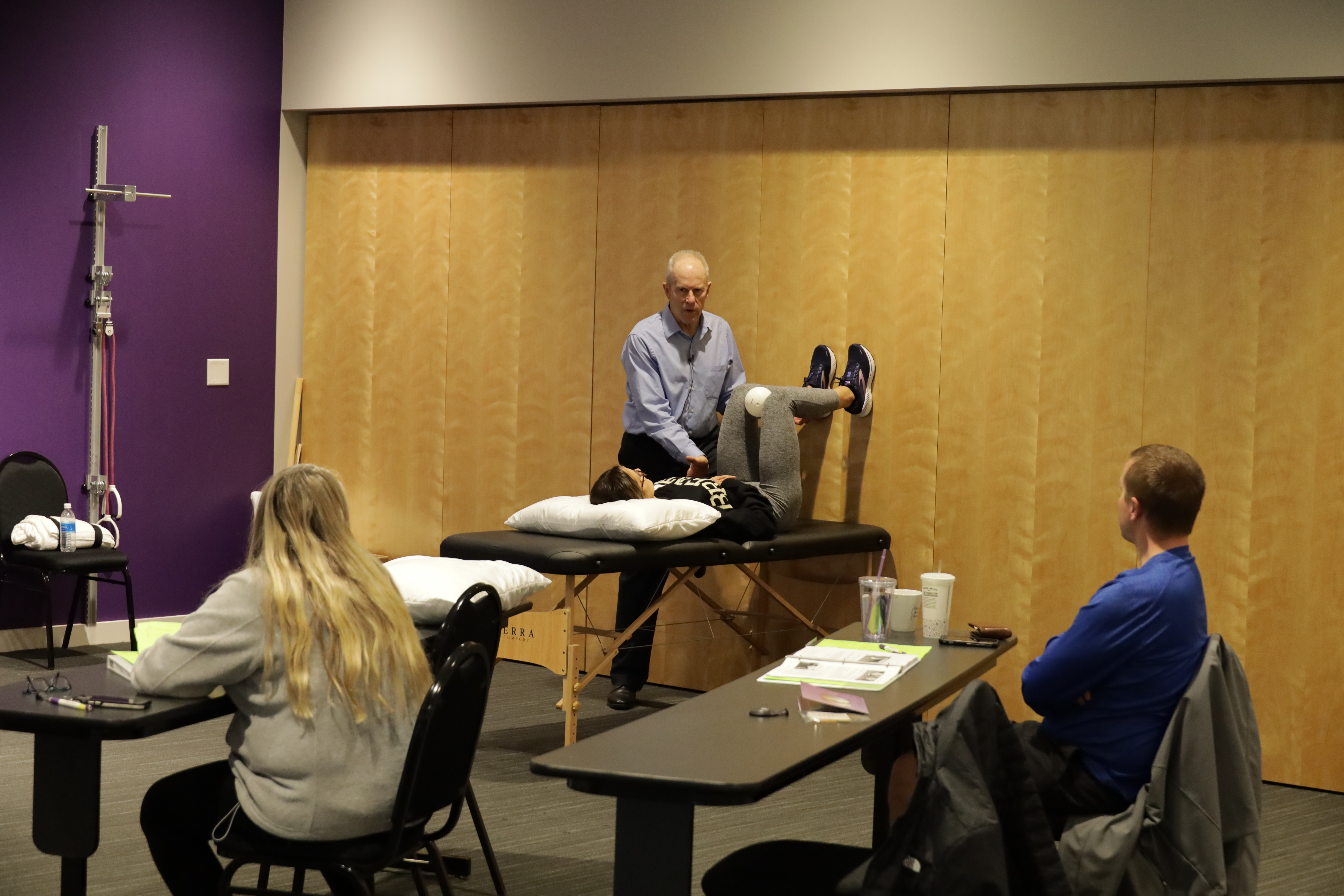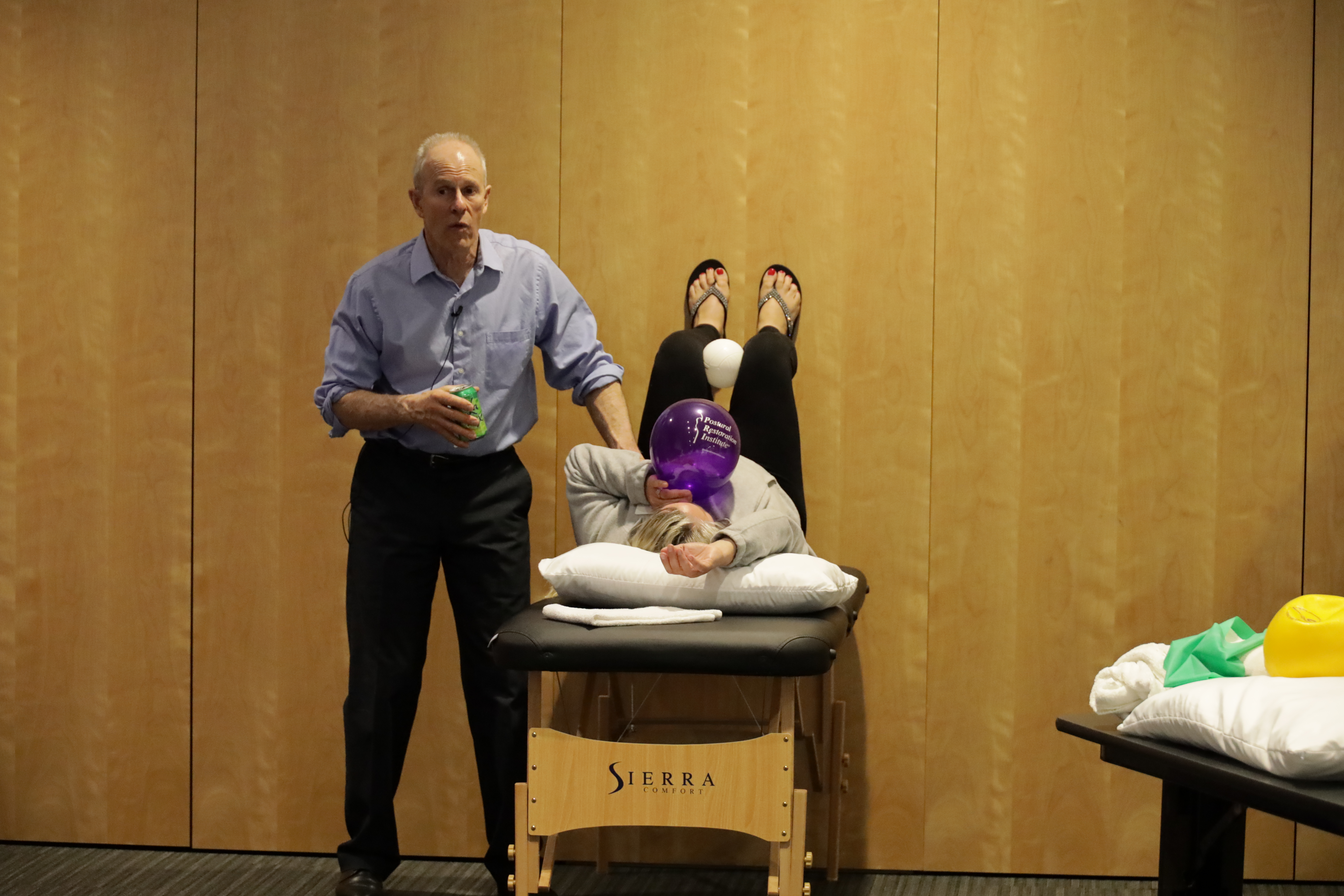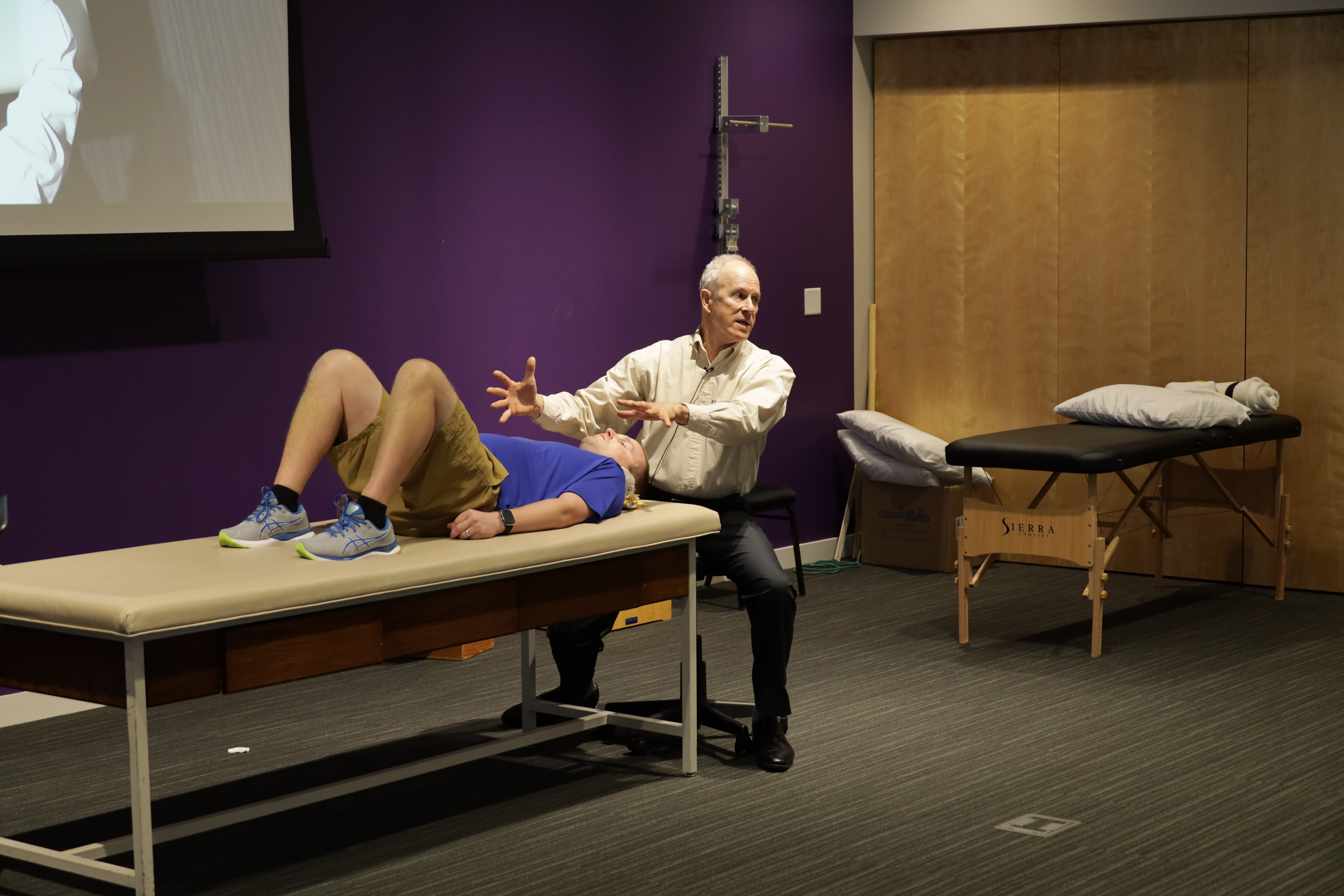Postural Respiration was presented at the Postural Restoration Institute May 28-29 to a large zoom audience of students as well as live participants. It is always a pleasure to have students from around the world in different time zones staying up late or getting up early to participate in this flagship primary course. There were students from Australia, Europe and coast to coast from North America and a large percentage of students were first time attendees to a PRI course, and for the majority of students, first time to Postural Respiration.

Delivery of air pressure sense and its effect on pelvis, ribcage and diaphragm shape, form and function are central themes that are returned to over and over in this course as it relates to neurology and ultimately biomechanics.
I taught Postural Respiration two weeks before in Chandler, AZ and there were similarities in terms of lab and demo with one student in each course presenting with almost exactly the same exam findings and same treatment guidelines as defined in this course for Superior T-4.
Often this patho-mechanical compensation can seem daunting to identify and treat, however, in both courses with both attendees, following the course guidelines with a detailed and repetitive description of both non-compensatory respiration and contrasting with patho-mechanical respiration made this difference very clear. Both students remained positive in their PRI testing on day one even after non-manual and manual AIC treatment regimens. Then, on day two following Page 50 guidelines to determine if these individuals were in fact presenting with Superior T-4, a subclavius release with infra-clavicular pump was performed and all tests became negative with both cases. No pressure, but the instructor is always relived when this occurs!



The overuse of accessory muscles of respiration became very clear to all attendees in both classes knowing that scalenes, for instance, need to act more like initiators of the first rib to signal rostal to caudal sequential rib elevation and not become primary rib lifters attempting to direct and deliver air inappropriately into a right chest wall. Superior T-4 became very clear as to just one more step in the treatment guidelines for effective and balanced delivery of airflow pressure sense. This allows then alternating and reciprocal function into the entire physiological, neurological and biomechanical systems.
All in all it was a wonderful course especially the time and attention all of the students provided and "spot-on" questions that were asked. Thanks to all of our students especially on zoom from different continents and time zones. And the course was facilitated so well by RJ Hruska as he makes the process go so easy for students and instructors!


